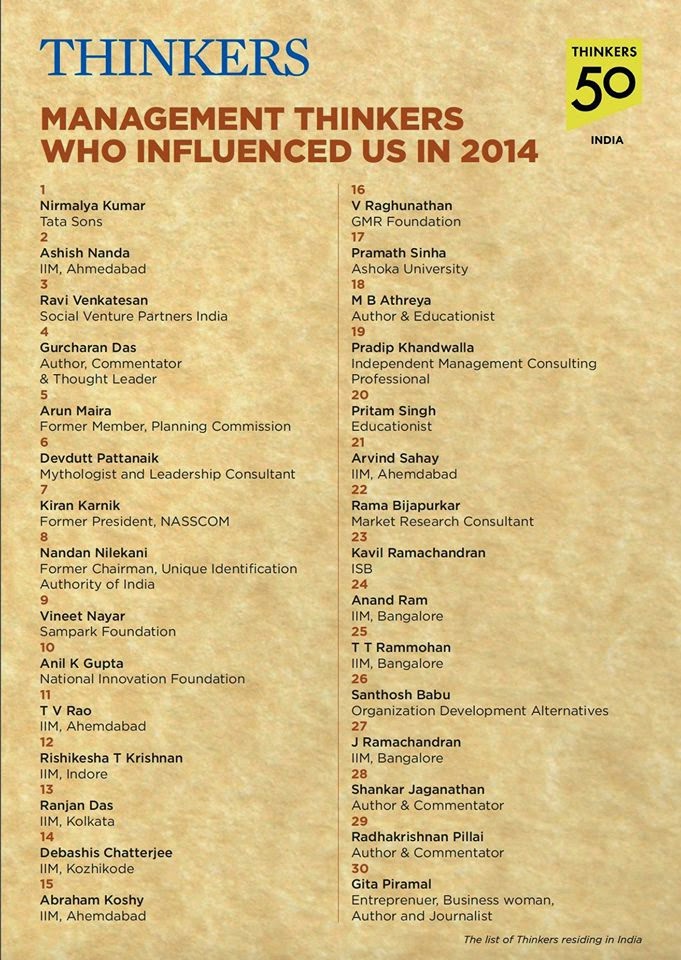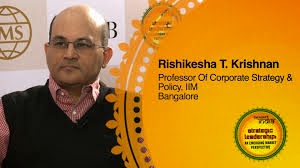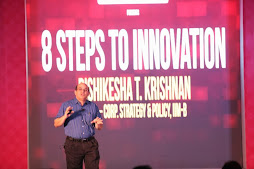I just spent the best part of a week in Jakarta,
Indonesia. The occasion was the National Science & Technology Development
Forum, organised by PAPPIPTEK, a research centre focusing on Science &
Technology Development. This is a part of LIPI, the Indonesian Institute of
Sciences. I gave a talk at the Forum, but will return to that in a later
blogpost. In the meantime, here are some insights into innovation in Indonesian
industry that I gleaned from my interaction during my visit.
Innovation in Indonesian Industry
The overall innovation story in Indonesia doesn’t sound too different
from that of India - low spending on R&D, limited interaction between
academia/research institutions and industry, and a lack of confidence in local
research capabilities. Of course, there are some significant differences as well.
Indonesia has not had the benefit of two powerful Indian growth engines –
software and pharmaceuticals.
But, during my short stay in Indonesia, I saw at least two
bright spots that signify Indonesia’s innovation potential.
PT Bukaka
During my stay in Jakarta, I had the opportunity to join a
group from the NSTD Forum that visited Bukaka, a large engineering conglomerate
located on the outskirts of the city, on the way to Bogor. Founded in 1978, Bukaka
has industrial units that design and manufacture steel bridges; manufacture
forgings for a variety of industries; build special purpose vehicles (like fire
fighters, not the financial type SPVs!); execute hydel power projects on an EPC
basis; etc.
But the impressive dimension of Bukaka is the senior
management’s “can-do” attitude, willingness to learn by doing, and refusal to
be daunted by the complexity of engineering or the nature of competition. A
good example of this is Bukaka’s diversification into the aerobridge business.
Bukaka entered the aerobridge business without prior experience and without a
formal technical collaboration. But today it is a significant player in the
manufacture and installation of aerobridges in Asia with significant
installations in Japan, Hong Kong and India. I visited the aerobridge assembly facility
– several elegantly engineered aerobridges were ready and awaiting testing and
dispatch to Japan and India.
Looking at Bukaka’s success in the aerobridge domain made me
wonder why Indian companies couldn’t have done something similar. I am sure a
company like L&T, for example, has the engineering competence to design and
manufacture aerobridges. My hunch is that Indian companies would have hesitated
to make the upfront investments in R&D/engineering that would have been
required to emulate Bukaka. That’s a pity because our reluctance to make such
investments prevents us from getting into products like aerobridges that have
considerable visibility and branding potential.
What also impressed me about Bukaka was the clarity of the
senior management about the company’s strategy and where their competitive
advantage lies. In response to a question about why Bukaka doesn’t make trucks,
the company representative present explained how Bukaka’s advantage is in custom-built
products that have a high engineering content rather than in mass production
where they would have to compete with well endowed global companies with long
experience in the field.
Warsito Taruno and EdWar Technology
Dr. Warsito Taruno was a star speaker at the NSTD Forum. Dr.
Taruno is a pioneer of the Electrical Capacitance Volume Tomography (ECVT) field.
His work in this field goes back to his days as a student at Shizuoka
University in Japan where he was awarded his PhD degree. Later, he worked at
Ohio State University, leading to outstanding publications and patents for
extending the ECVT domain.
ECVT allows 4-dimensional tomography scanning and is very
useful in early detection of breast cancer. Other applications of ECVT include
power plant simulation and non-destructive testing.
Dr. Taruno moved back to Indonesia over 5 years ago and
today leads teams doing research in the ECVT field and also developing and
selling ECVT systems. ECVT work involves straddling disciplines as diverse as
electronics and signal processing, high performance computing and sensors, and
industrial process imaging and medical physics. Dr. Taruno strongly advocated
building open innovation networks straddling academia and industry, citing the experience
of the Virtual Center of Industrial Process Tomography and the OSU industrial
Consortium.
Dr. Taruno is also pioneering electrocapacitance cancer
(ECC) therapy. According to him, ECC therapy has the advantages of being
non-invasive, non-oral, non –contact and is based on low voltage and dielectric
polarization with limited side-effects. He has developed a wired and computed “suit”
that can be worn for breast cancer therapy. According to information available
on Indonesian websites, Dr. Taruno used ECC therapy to control breast cancer in
his sister. However, it is not clear whether ECC therapy has gone through the
trials and tests usually required of medical devices and technologies; some
comments by the Indonesian medical fraternity suggest that his methods still
need to be validated.
But notwithstanding these issues, Dr. Taruno is a good example
of an accomplished scientist returning to Indonesia to pursue advanced science
and technology. So far, he seems to be succeeding. Dr. Taruno should be a
powerful catalyst for advanced yet practical science and technology in
Indonesia. He has a strong sense that technology development and commercialization
must go hand in hand. He believes that open innovation and strategic
partnerships are the way forward. Stressing that cooperation is a more critical
requirement than funding, he underlines that self-belief drives research.
In India, I haven’t seen too many scientists like Dr. Taruno
who are able to straddle theory and practice. He seems to enjoy support from
the Indonesian government and perform both academic and business roles (something
that is again difficult in India) with ease. If Dr. Taruno is representative of
what’s happening in Indonesia, it appears that in its own quiet way, Indonesia
is creating powerful technology companies for the future.
Software start-ups
I didn’t have a chance to meet any Indonesian software
start-ups, but I did have an opportunity to talk to Purnama Alamsyah, a
researcher at LIPI. Purnama’s research shows that the success rate of software
start-ups in Indonesia is very low – only 5 out of 500 start-ups he has been
tracking are moving forward. While funding is a challenge, Purnama attributes
quick technological changes and difficulties in sales / conversion of products
into revenues for the low success rate. But, he says that the environment is
quite dynamic, with new start-ups being created rapidly and existing start-ups
morphing into new ones if and when their current business model doesn’t work.
So, we should watch out for Indonesian software companies in the future.
Conclusion
In my short exposure to Indonesian industry, I got a glimpse
of what is possible in that country, as also in other developing countries.
Both Bukaka and Dr. Taruno impressed me by their intense desire to innovate to succeed.
I was impressed by their quiet confidence based on their expertise and
willingness to overcome odds. Both of their experiences underline the
importance of openness to external inputs yet at the same time not giving up on
internal efforts. They should be an inspiration not only to Indonesian
innovators but to Indian innovators as well.


















No comments:
Post a Comment